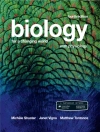Applications of nucleic acids have developed recently to provide solutions for biosensors, diagnostic tools and as platforms for the assembly of complex structures. These developments have been possible as their base sequence can be used to assemble precise structures following simple and predictable rules. Self-assembled DNA can then be amplified using polymerase chain reaction (PCR) and this ultimately enables the preparation of synthetic nucleic acids. Their use as molecular tools or DNA-conjugates has recently been enhanced by the addition of other groups including enzymes, fluorophores and small molecules. Written by leaders in the field, this volume describes the preparation and application of these DNA-conjugates. Several have been used as sensors (aptamers, riboswitches and nanostructures) based on the ability of nucleic acids to adopt specific structures in the presence of ligands, whilst others link reporter groups such as proteins or fluorophores to RNA or DNA for detection, single molecule studies, and increasing the sensitivity of PCR. The book is relevant to researchers in areas related to analytical chemistry, chemical biology, medicinal chemistry, molecular pharmacology, and structural and molecular biology.
قائمة المحتويات
Nucleic Acid Sensors for SERRS;
Quadruplexes as sensors;
Click Chemistry;
Fluorophore conjugates for single-molecule work;
Chromophore-functionalized LNAs and their use in exploratory diagnostic applications;
Small molecule-DNA conjugates;
DNAzymes;
Electrochemical aptamer based sensors;
Small molecule-RNA conjugates;
DNA p H sensors;
Oligonucleotide-conjugates for detection;
Oligonucleotide-conjugates as artificial Enzymes;
Aptamers as diagnostic and therapeutic reagents;
Subject Index
عن المؤلف
Keith Fox receive his first degree in Natural Sciences (Biochemistry) from the University of Cambridge in 1977, where he also completed his Ph D in the Department of Pharmacology. He stayed in Cambridge for post-doctoral research. In 1987 he moved to a lectureship at Southampton and where he was also a Lister Institute Research Fellow from 1989-1994. He was promoted to a Chair in Biochemistry in 2000. His research interests centre on DNA recognition by small molecules, oligonucleotides and proteins and he has developed the footprinting technique as a powerful tool for measuring the specificity, stability and kinetics of ligand-DNA interactions. Tom Brown received his first degree and Ph D in Chemistry at Bradford University. He moved to Nottingham University, then to Oxford and Cambridge University to carry out postdoctoral research. In 1985 he was appointed to a lectureship in Biological Chemistry at Edinburgh University where he was promoted to Reader then Professor of Nucleic Acids Chemistry. He moved to a Chair in Chemical Biology at Southampton University in 1995. His research interests centre on nucleic acids chemistry, structure, DNA sequence recognition and the applications in biology and medicine. He is co-founder of three Biotech companies. Awards include the Royal Society of Edinburgh Mak Dougall-Brisbane prize for research, the Royal Society of Edinburgh Caledonian Research Fellowship, the Royal Society Leverhulme Senior Research Fellowship, the Royal Society of Chemistry Josef Loschmidt prize, the Royal Society of Chemistry award for nucleic acids chemistry and the Royal Society of Chemistry prize for interdisciplinary research. He is a Fellow of the Royal Society of Edinburgh and a Fellow of the Royal Society of Chemistry.












